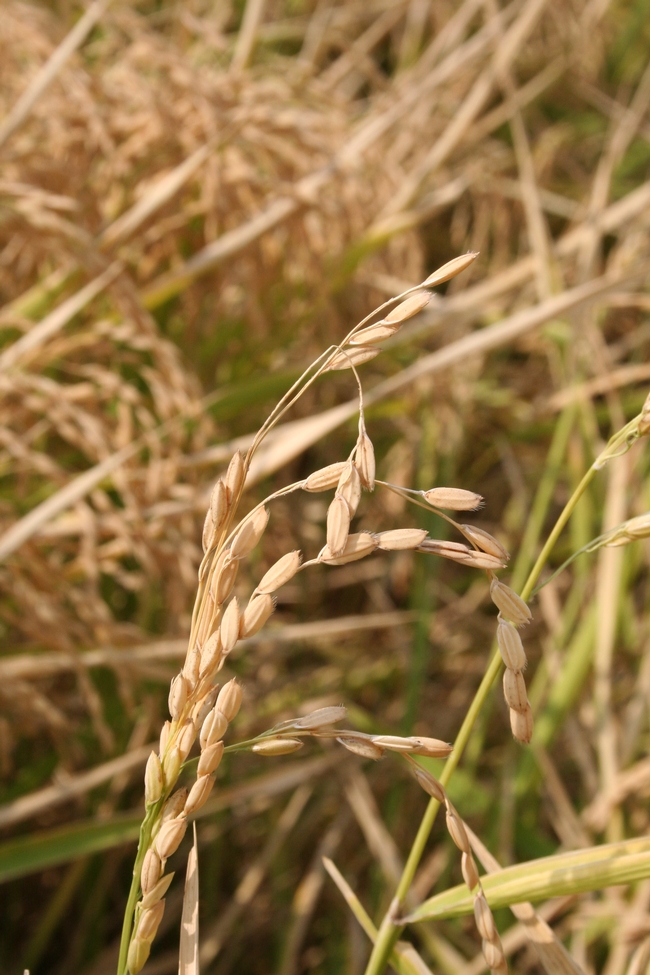It is difficult to accurately estimate yield losses due to armyworm damage. Early infestations that injure only foliage can reduce tillering, delay the crop, and cause uneven maturity. Infestations during heading and grain filling injure the panicle, causing blanks and broken panicle branches.
If defoliation was severe, try to estimate the percentage defoliation and what proportion of the field was affected. Many of the affected fields I saw had small areas where defoliation was almost complete, and some areas where defoliation was small. For example, such a field would have 80% defoliation on 90% of the area of the field, and 10% defoliation on the remaining 10% of the area of the field.
For panicle injury, observe the panicles before harvest. Broken branches are relatively easy to spot (see picture below). Grab 10 to 20 panicles and count how many have broken branches. Repeat this in three or four areas of the field, and then transform it to % injured panicles. If more than 10% of the panicles were injured, the action threshold was exceeded and there may be a yield reduction. The higher the % injured panicles, the higher the yield reduction. Research has shown that for every 1% increase in injured panicles, there may be a 0.07% reduction in yield. So, in a field with 10% injured panicles, yield could be lowered by 0.7%.
It's important to keep these estimates, together with any records of insecticide applications and yield, so that if we are in a similar situation next year, the industry can justify a section 18 for the insecticide Intrepid again.